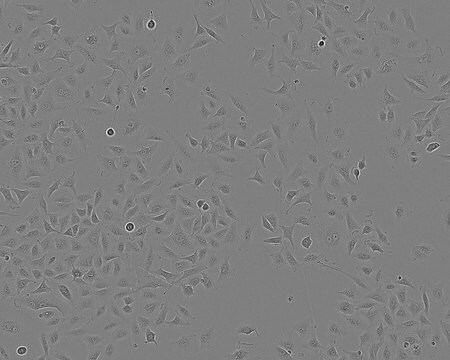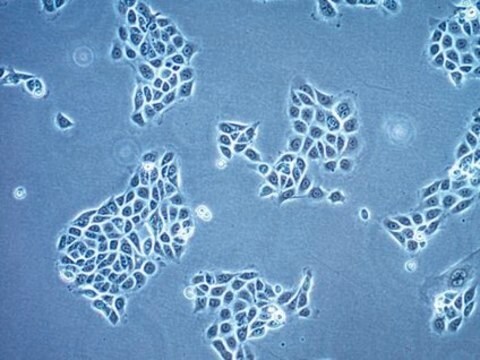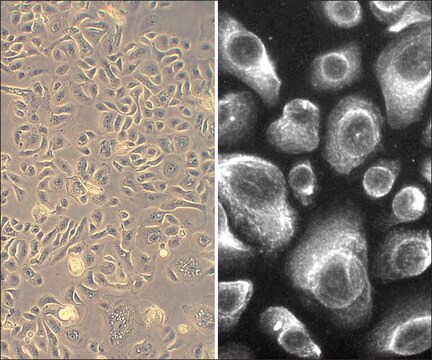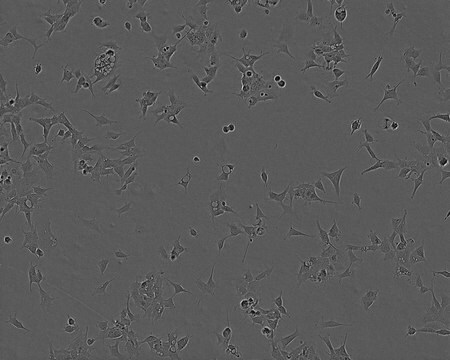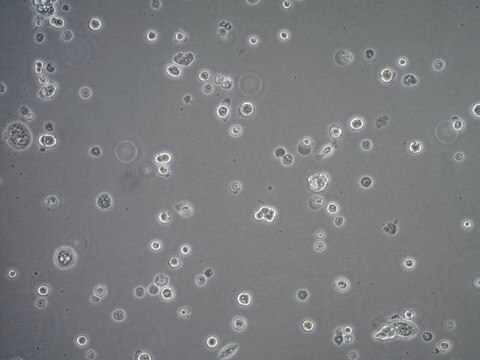95102433
BEAS-2B Cell Line human
About This Item
Produits recommandés
Source biologique
human lung
Niveau de qualité
Description
Human bronchial epithelium, normal
Forme
liquid
Mode de croissance
Adherent
Caryotype
Not specified
Morphologie
Epithelial-like
Produits
Not specified
Récepteurs
Not specified
Technique(s)
cell culture | mammalian: suitable
Conditions d'expédition
dry ice
Température de stockage
−196°C
Origine de la lignée cellulaire
Description de la lignée cellulaire
Application
Profil d'ADN
CSF1PO: 9,12
D13S317: 13
D16S539: 12
D5S818: 12,13
D7S820: 10,13
THO1: 7,9.3
TPOX: 6,11
vWA: 17,18
Milieu de culture
Procédure de repiquage
Autres remarques
Cultures from HPA Culture Collections and supplied by Sigma are for research purposes only. Enquiries regarding the commercial use of a cell line are referred to the depositor of the cell line. Some cell lines have additional special release conditions such as the requirement for a material transfer agreement to be completed by the potential recipient prior to the supply of the cell line.
Please view the Terms & Conditions of Supply for more information.
Clause de non-responsabilité
Code de la classe de stockage
10 - Combustible liquids
Classe de danger pour l'eau (WGK)
WGK 3
Point d'éclair (°F)
Not applicable
Point d'éclair (°C)
Not applicable
Faites votre choix parmi les versions les plus récentes :
Certificats d'analyse (COA)
Désolés, nous n'avons pas de COA pour ce produit disponible en ligne pour le moment.
Si vous avez besoin d'assistance, veuillez contacter Service Clients
Déjà en possession de ce produit ?
Retrouvez la documentation relative aux produits que vous avez récemment achetés dans la Bibliothèque de documents.
epithelial cells exposed to atmospheric particulate matter (PM2.5 and
PM>2.5) collected from Cotonou, Benin
Notre équipe de scientifiques dispose d'une expérience dans tous les secteurs de la recherche, notamment en sciences de la vie, science des matériaux, synthèse chimique, chromatographie, analyse et dans de nombreux autres domaines..
Contacter notre Service technique